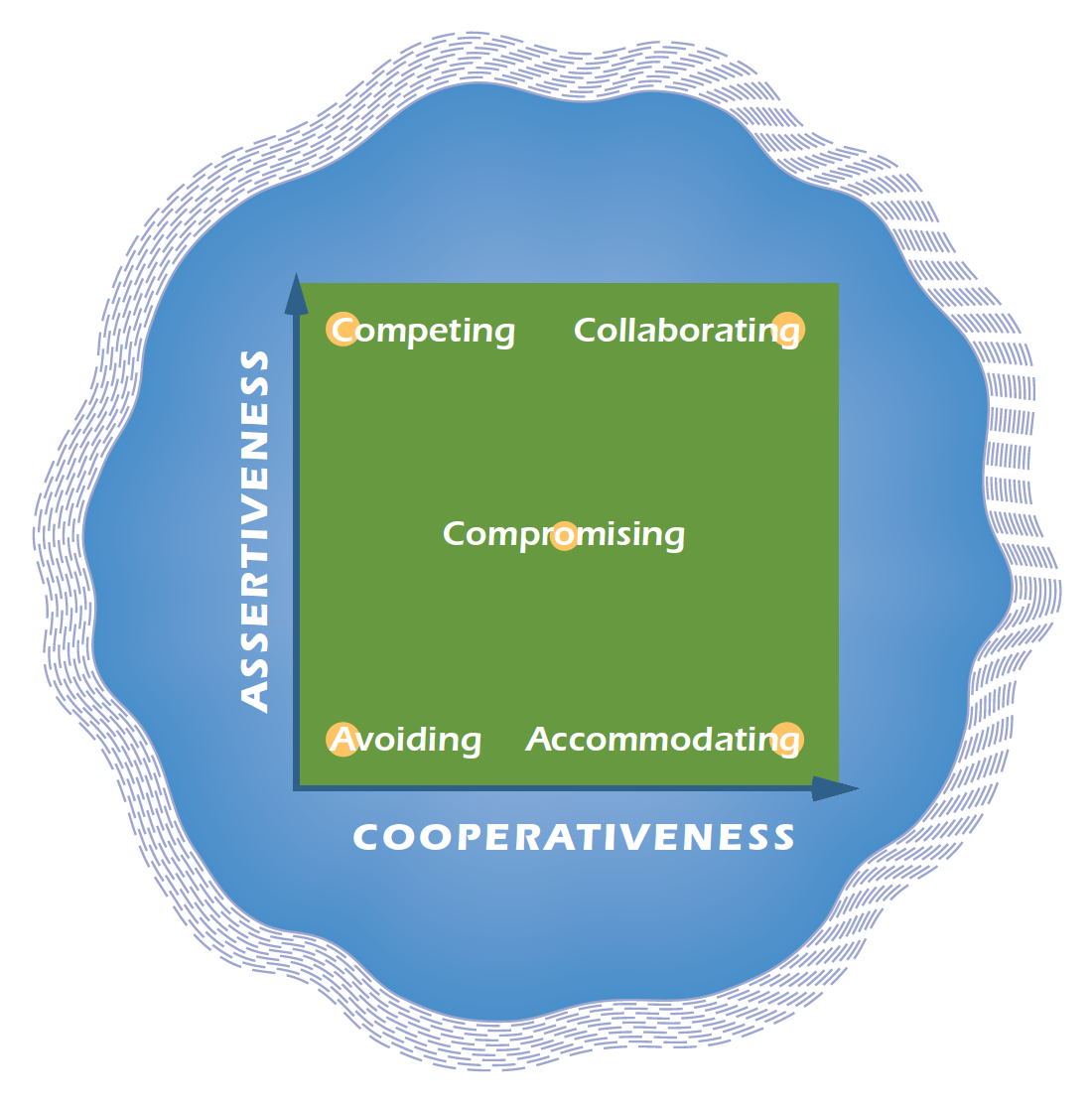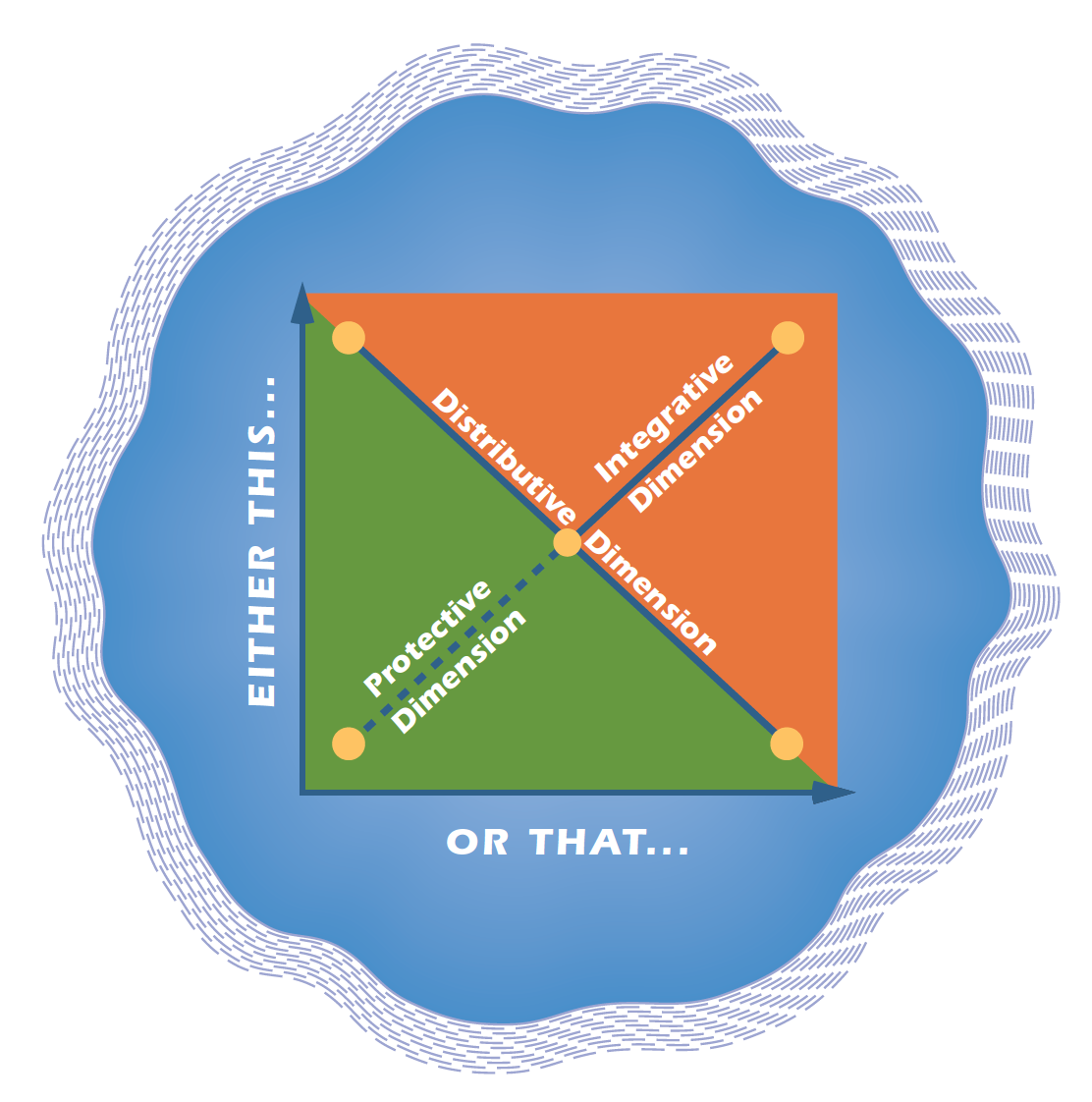08 Jan Modifying the Underlying Dimensions in the TKI Conflict Model
Ralph H. Kilmann, co-author of the Thomas-Kilmann Instrument (TKI)
Since the early 1970s, two dimensions have been used to plot the five conflict modes: Assertiveness and Cooperativeness (my attempts to satisfy my own needs versus my attempts to satisfy the other person’s needs, respectively). Occasionally, these two dimensions were modified to Person A and Person B, as just another way of focusing on the needs and concerns of two people engaged in an interpersonal conflict.

During the past decade, however, I have often modified those two underlying dimensions to draw special attention to unique kinds of conflicts, as in EITHER THIS … OR THAT. For example, using the Kantian/Hegelian dialectic, Assertiveness and Cooperativeness can be changed to Thesis (a position, policy, or perspective) and Anti-Thesis (its opposite). In this way, a collaborative solution becomes a Synthesis. This new Synthesis, then becomes a new Thesis, which usually attracts a new Anti-Thesis, and the cycle of conflict and change continues to unfold. Such modifications to the original dimensions led me to see the heuristic power of the TKI Conflict Model well beyond its original design.

Most recently, with my work on mind/body/spirit consciousness, it won’t come as a surprise that I again modified the Assertiveness/Cooperativeness dimensions in order to highlight unique kinds of consciousness conflicts:
- Are you a physical body or an energy body?
- Are you governed by your ego or by your soul?
- Is your self (your ego and/or your soul) separate from your surrounding systems?
- Have you resolved your primal relationships…based on your version of what happened in the past or the other person’s version of what happened at that time?
By replacing the Assertiveness vs. Cooperativeness dimensions with Physical Body vs. Energy Body, Your Ego vs. Your Soul, Your Systems vs. Your Self, or Your Version of the Truth vs. The Other Person’s Version of the Truth…each unique conflict can be seen with the wisdom of the TKI Conflict Model.
Bottom line: What first appears as an either/or polarity, a win-lose argument, or a perpetual deadlock can be transformed—under the right conditions—into a collaborative solution. In particular, people can discover a new perspective that allows them (1) to see themselves (and others) as BOTH a physical and an energy body, (2) to realize that they can discover an approach to life that will satisfy both their ego’s desires and their soul’s purpose, (3) to acknowledge that their surrounding systems are as much a part of their inner selves (as their ego and soul) and thus they are fully responsible for transforming their surrounding systems as they are responsible for their own personal development, and (4) to reformulate what happened between two people based on BOTH persons’ account will be closer to the Truth of what really happened…and thus they can fully resolve their relationship and heal their wounded boundaries.
Experiencing the benefits of modifying the underlying dimensions of the TKI Conflict Model thus opens the door to additional modifications that will surely extend the reach of this traditional model to new—and perhaps even more complex and contemporary—conflict situations.
Kilmann Diagnostics offers a series of eleven recorded online courses and nine assessment tools on the four timeless topics: conflict management, change management, consciousness, and transformation. By taking these courses and passing the Final Exams, you can earn your Certification in Conflict and Change Management with the Thomas-Kilmann Instrument (TKI). For the most up-to-date and comprehensive discussion of Dr. Kilmann’s theories and methods, see his 2021 Legacy Book: Creating a Quantum Organization: The Whys & Hows of Implementing Eight Tracks for Long-term success.




